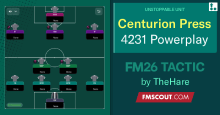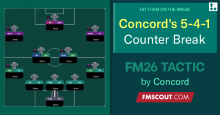
After losing the ball Manchester United press high and with high intensity without changing the starting formation they try to maintain in all phases of the game.
Only in the transition phase, when they fail to recover the ball quickly, does the central block switch to 4-1-4-1 or 4-3-3 with one of the central midfielders moving to a deeper position in the centre of the pitch.
During positional play, they play with a high defensive line but leave plenty of space between the lines encouraging their rivals to make shorter passes and play combinations.
Interestingly, Ten Hag has almost completely abandoned Ajax’s rotating positions and ball possession in favour of a very fluid attacking transition, fast distribution and a more individual approach.
In the first phase of the action, a transitional 2-5-3 shape emerges, which as it progresses transitions into a 4-4-2. Once in the opponent’s half, adopt an already 4-2-3-1 in which the wing-backs and wingers are given freedom to find free space bound only by the position of their partners.
The rotations of positions is basically only found in the positions of the central midfielders, who at the same time decide on the variant of playing the action.
The key to developing shooting positions, however, is the technical skill and running intensity of the wingers, who are able not only to find space for themselves to shoot, but above all to create space for the backs by running into vertical channels or creating overloads in their zones drawing the attention of their rivals.
Erik TEN HAG profile on tacticof.com












Discussion: Erik ten Hag 4-2-3-1 Man Utd Tactics
No comments have been posted yet..